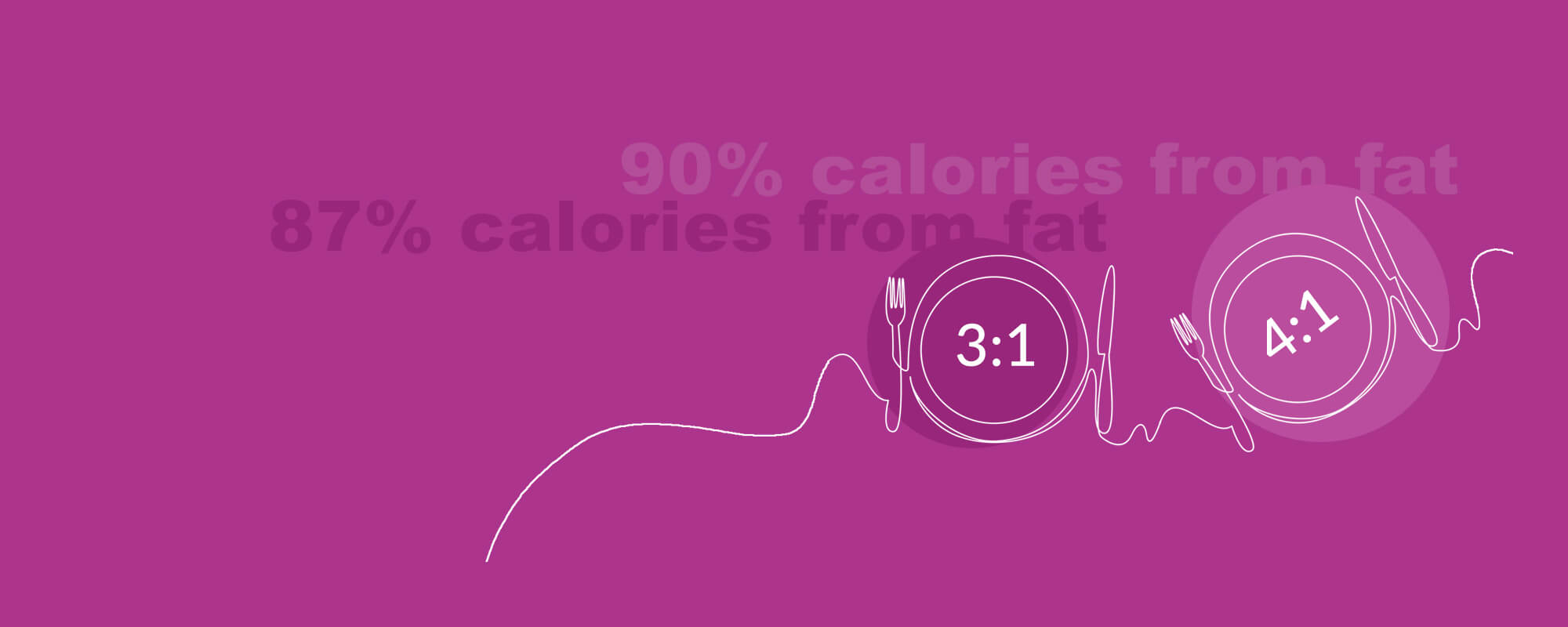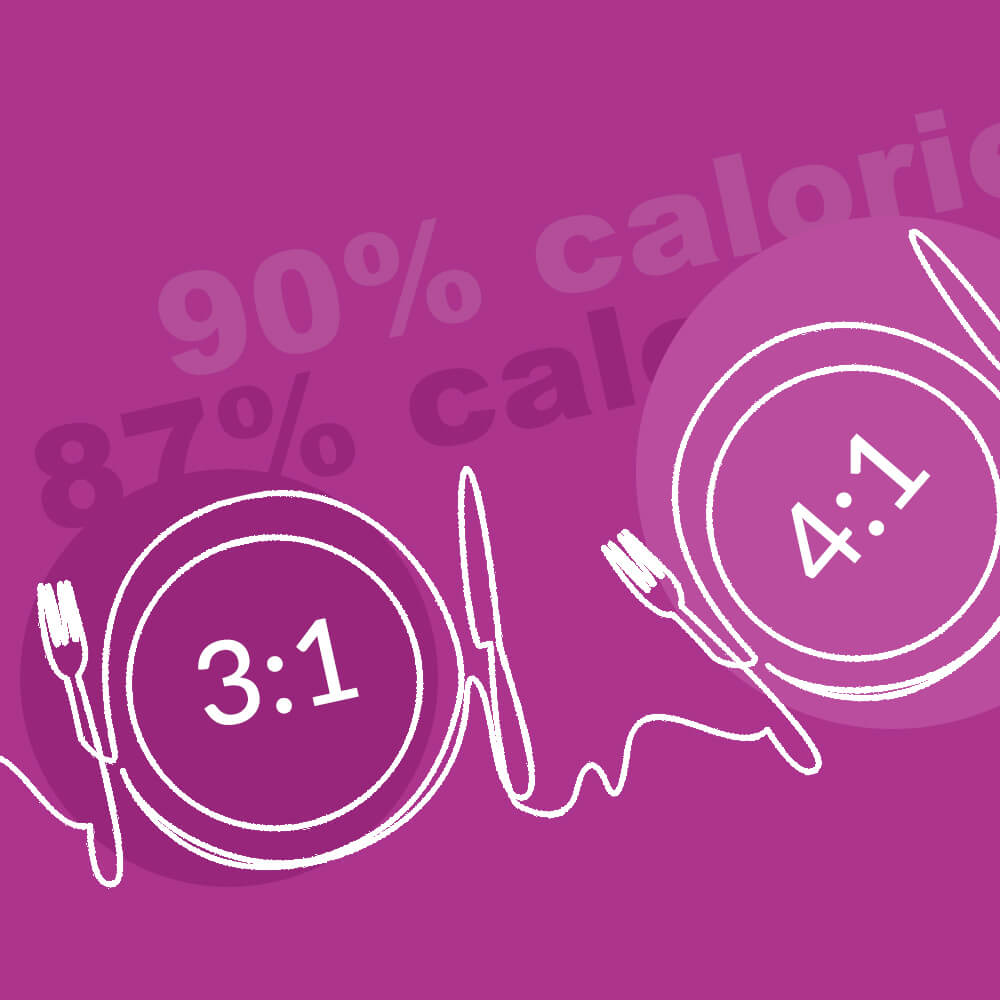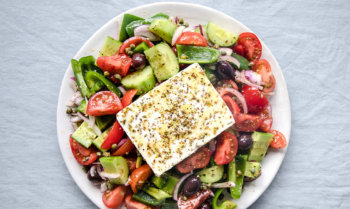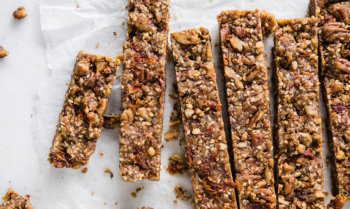Low-carb ketogenic diets can improve a variety of serious medical conditions, including obesity, diabetes, metabolic syndrome, mental illnesses, epilepsy, and even Alzheimer’s disease.
However, how carbohydrate restriction benefits each disease (and even each case of each disease) can vary. For example, weight loss and reversal of diabetes are primarily driven by the absence of dietary carbohydrates, rather than the presence of ketones.
However, conditions that affect the brain may benefit directly from the presence of ketone bodies. This makes sense because ketones are, first and foremost, a fuel for the brain. There is now evidence that ketogenic diets can improve at least some cases of epilepsy, mental illnesses, and even neurodegenerative diseases like Parkinson’s disease and Alzheimer’s disease.
Therefore, in circumstances where a healthcare provider and patient agree that targeting deeper states of ketosis may provide therapeutic benefit, it is reasonable to entertain the 3:1 and 4:1 ketogenic diet options.
What are 3:1 & 4:1 Ketogenic Diets?
Typical ketogenic diets aim to include moderate protein and about 70% of calories from fat. This strategy usually promotes nutritional ketosis, defined as having blood ketone levels above 0.5 mmol/L. However, in circumstances where ketone bodies – and in particular the main ketone body β-hydroxybutyrate (βHB) – may serve as the acting therapeutic agent, this might not be enough ketosis to ‘get the job done.’
3:1 and 4:1 ketogenic diets are stricter ketogenic diets. A 4:1 ketogenic diet contains 4 grams of fat for every 1 gram of protein and carbs combined or 80% fat by weight in grams (4÷5=80%). Likewise, a 3:1 ketogenic diet contains 3 grams of fat for every 1 gram of protein and carbs combined or 75% fat by weight in grams (3÷4=75%).
However, as a percentage of calories, the ratio changes a bit. That’s because fat provides more calories per gram than protein and carbohydrates. A gram of fat provides the body with 9 calories, while each gram of protein or carbohydrate provides the body with 4 calories. The 4:1 ketogenic diet is 80% fat by weight but 90% by calories and 3:1 ketogenic diet is 75% fat by weight but 87% fat by calories.
If you are curious about how we get the percentages from the ratios, here is the math. Remember, each gram of fat contains 9 calories and each gram of either protein or carbs contains 4 calories.
![]()

Ketones, how much is enough?
I wish I could tell you that “for disease X you need to achieve βHB levels of Y to see benefit.” Unfortunately, we do not have enough data to suggest what the threshold level of benefit might be for any individual suffering from a disorder that could be improved by a 3:1 or 4:1 diet. We also do not have enough data to say that ketogenic diets will help in all circumstances.
As time passes and more data are collected, it is likely we will be able to offer more precise guidelines. But, for now, the 3:1 or 4:1 ketogenic diet exists primarily as therapeutic options for patients to explore with their physicians. They are one more tool in the toolbox that may be worth a try for patients looking for a natural option or for those suffering with unremitting diseases.
In brief, there is no prescription level of βHB that medical experts can recommend. However, 3:1 or 4:1 ketogenic diets that raise βHB levels into the 2.5 – 6.0 mmol/L range are certainly more likely to help a patient pass any therapeutic “threshold” than less strict diets in which βHB increases only above 0.5 mmol/L.
Whereas typical ketogenic diets elevate βHB levels above 0.5 mmol/L, 3:1 and 4:1 diets can elevate βHB far more, usually between 2.5 – 6.0 mmol/L. This means there is more βHB available to fuel and reprogram the brain and, potentially, help to improve neurological and neurodegenerative conditions.
How do ketones support brain function?
We said earlier that ketones, specifically βHB, are an excellent fuel for the brain’s neurons. Therefore, as ketone body levels rise on a 3:1 or 4:1 ketogenic diet, more fuel is available to support brain function. This is particularly important when glucose metabolism in the brain is impaired, which may be a common feature of neurological diseases.
For example, glucose metabolism is decreased in the brains of persons with Alzheimer’s disease and major depressive disorder. Correspondingly, randomized controlled trials have shown ketogenic diets can improve the former and case series suggest ketogenic diets may be an emerging therapeutic option for the latter.
It is also important to note that βHB is not just a fuel, but a powerful signaling molecule. βHB binds receptors on cells surfaces, change phosphorylation cascades, inhibits histone deacetylases to change the way DNA is read into proteins, and itself modifies over 1,000 different proteins within cells. In this way, βHB and 3:1 or 4:1 ketogenic diets have the potential to rewrite brain metabolism and improve neurological and neurodegenerative disease states and mental illnesses.
Can I use exogenous ketones?
An alternative strategy for entering into deeper states of ketosis, without adhering to 3:1 or 4:1 diets, is to attempt a more moderate ketogenic diet and boost ketone levels with exogenous ketones. For example, one could try a 2:1 ketogenic diet and supplement with a ketone salt or ester. This could provide more dietary flexibility and improve quality of life for the individual.
However, we do not know if exogenous ketones provide the same benefits as those made inside your body by your liver and brain’s support cells. Furthermore, we do not know the long-term consequences of using an exogenous ketone while on a standard diet, which is why I generally suggest – if a person does experiment with exogenous ketones – they do so as a booster on top of a standard ketogenic diet.
Lastly, if a patient and practitioner agree to try exogenous ketones, it’s important to use only those that contain pure “D-βHB.” Molecules in nature often have a property called chirality, which means they exist in left (L) and right (D) handed forms. The body is like a right-handed glove and is best able to use the right-handed D form of βHB. So, if you try an exogenous ketone supplement, go for the pure D.
Side Effects
There are sometimes side effects of a 3:1 or 4:1 diet. Most of these include moderate gastrointestinal symptoms, like diarrhea or occasionally nausea. Sometimes, these side effects go away on their own as a person adapts to the diet, and a well-informed practitioner or keto-coach may be able to help troubleshoot any unpleasant symptoms.
Getting Practical: What does a 3:1 and 4:1 ketogenic diet look like?
Simply, a 3:1 ketogenic diet will typically include a small amount of a protein – perhaps the side of half a fist – along with enough fat to meet an individual’s caloric needs. Minimal carbohydrates can enter the diet as included in healthy high-fat foods, like avocado (3 grams of net carbs per fruit) or macadamia nuts (1.5 g net carbs per 10 nuts), or as a carrier for healthy fats, like 100 grams of spinach (1.5 g net carbs) stir fried in a liberal amount of ghee, tallow, or avocado oil.
A three-meal day of eating a 3:1 ketogenic could look something like this:
-
- 50 grams of salmon and a medium Hass avocado drizzled with 2 Tablespoons of extra virgin olive oil for breakfast (Ratio = 3.25:1; Protein = 16 grams; Calories = 655).
- 1 large egg and 2 large egg yolks and 50 grams of bacon fried in 2 Tablespoons of ghee for lunch (Ratio = 3.1:1; Protein = 20 grams; Calories = 636).
- 60 grams of Roquefort cheese and 20 crushed macadamia nuts over a spinach salad drizzled with 1 Tablespoon of extra virgin olive oil for dinner (Ratio = 3.1:1; Protein = 20 grams; Calories = 770).
A 4:1 ketogenic diet simply decreases the calories from carbs and protein, or adds in extra fat. The above breakfast, lunch, and dinner options could be modified as follows:
-
- Add an extra Tablespoon of oil to breakfast. 50 grams of salmon and a medium Hass avocado drizzled with 3 Tablespoons of extra virgin olive oil for breakfast (Ratio = 4:1; Protein = 16 grams; Calories = 780).
- Remove the whole egg from lunch. 2 large egg yolks and 50 grams of bacon fried in 2 Tablespoons of ghee for lunch (Ratio = 4.3:1; Protein = 13 grams; Calories = 551).
- Reduce the portion of cheese by 20 grams at dinner and add in a Tablespoon of oil. 40 grams of Roquefort cheese and 20 crushed macadamia nuts over a spinach salad drizzled with 2 Tablespoon of extra virgin olive oil (Ratio = 4.1:1; Protein = 16 grams; Calories = 821).
Obviously, this is not your 3:1 or 4:1 prescribed menu. It’s just included to give you a sense of what eating a 3:1 or 4:1 diet could look like in terms of the relative amount of real food sources of protein, fat, and carbs.
Shopping List
Here is a list of foods that one could consider including in a 3:1 or 4:1 diet.
Proteins:

-
- Fatty cuts of meat (ideally 100% grass-fed)
- Bacon and fatty pork (ideally pasture raised)
- Eggs and egg yolks (ideally pasture raised)
- Rich cheeses, like Roquefort (ideally sheep and goat cheeses)
- Fatty fish (salmon, mackerel, anchovies, sardines, herring)
Cooking Fats:

-
- Ghee
- Tallow
- Suet
- Lard
- Virgin coconut oil
- Avocado oil
- Macadamia nut oil
Dressing Fats:

-
- Extra virgin olive oil
- Hazelnut oil
- Sesame oil
- Flax oil
Nuts and Seeds:

-
- Macadamia nuts
- Pili nuts
- Pecans (not too much)
- Brazil nuts (not too much)
- Walnuts (not too much)
- Flax seeds
- Chia seeds
- Sesame seeds
Dairy:

-
- Rich cheeses
- Heavy whipping cream
Vegetables:

-
- Arugula
- Asparagus
- Bok choy
- Eggplant
- Lettuces
- Mushrooms
- Nori
- Spinach
- Zucchini
Try Some 3:1 and 4:1 Recipes
4:1 Chocolate Hazelnut “Powerhouse” Truffles
3:1 On-the-Go Savory Granola Bars
Disclaimer
The 3:1 and 4:1 ratio ketogenic diets are usually used to treat serious medical conditions. As such, diet initiation should be done with the help of a trained clinician, not on your own.
Dr. Nicholas Norwitz received his Ph.D. in Ketogenics and Metabolism from Oxford University and is now pursuing his MD at Harvard Medical School. He is a new shining star in nutrition science with a research expertise in ketosis and brain aging. He has also published scientific papers on topics such as neuroscience, heart disease, gastrointestinal health, genetics, bone health, and diabetes, and is a co-author of The New Meditteranean Diet Cookbook.








